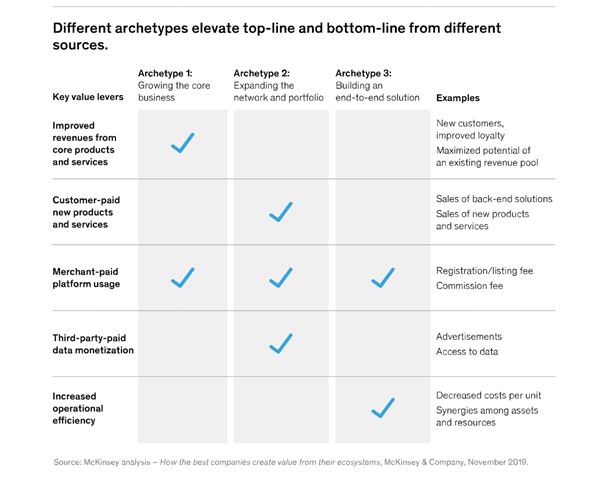Article Four fundamentals service providers should consider when defining a digital ecosystem





By Insight UK / 14 Apr 2022 / Topics: Cloud
Everyone is talking about it: digital ecosystems as one of the disruptive business models that will change the way business is done. As a service provider, you can't ignore it either. But what are the basic principles for a successful ecosystem and how do you avoid common pitfalls?
First of all: what is an ecosystem?
In business, an ecosystem is a model that connects different, complementary partners in order to jointly satisfy a market demand. It is not about a technical proposition, but about a value proposition. The concept of collaboration is not new, but ecosystems are fundamentally different in that (1) an ecosystem centres on customer demand and (2) the impact of all participants together is stronger than that of each of them individually.
Perhaps you have already been thinking about an ecosystem for your future business. What are the fundamentals you need to consider?
1. Know which problem you want to solve
Because an ecosystem requires investment in time and money, you should carefully evaluate whether the ecosystem solves a customer demand (as opposed to a traditional product proposition) and whether the demand is large enough to justify the investment. The customer demand can be an existing problem or a need that is new or even imminent. Defining the value proposition is the blueprint of your ecosystem.
2. Identify participants and their roles
Next, an ecosystem needs participants that complement and reinforce each other. Which parties fit together in terms of solutions, maturity, identity and culture? It is also important to consider the role you want to take in the ecosystem. If you are the orchestrator – perhaps because your service is at the core of the solution – you have great control and may earn more, but also carry the risks. In the role of participant you may receive less revenue, but also bear less risk and have more flexibility to participate in other ecosystems at the same time.
3. Valuate your ecosystem
When you are the orchestrator, one of the challenges is how to monetise the value of the ecosystem. McKinsey has developed a model on how companies can create value, based on how they want to evolve: growing their core business, creating new products and services, or building an end-to-end solution for a new segment (referred to as three ‘archetypes’, see below). In line with value capture, the ecosystem requires a value-sharing model to define each participant’s share.

4. Design a minimum viable ecosystem
Then the ecosystem has to go to market. A strategy for a successful launch is to design a ‘minimum viable ecosystem’ (MVE) . The idea is to introduce a product or service as a complete, workable solution with still a limited number of features: a minimum viable ecosystem. First and foremost, it is the value of the ecosystem that counts, not the size or breadth. When the ecosystem catches on, it will attract new participants, who in turn will add new value, allowing the ecosystem to develop.
Prepare for success
Partnering in a digital ecosystem gives service providers a new way forward to grow the business, enhance performance and acquire flexibility and resilience for the future. Are you looking for success? Then again, good preparation is half the battle. These four starting points will in any case provide a good basis to start.
Need help?
At Insight, we help service providers in realizing their business ambitions in a multi-cloud world. As a multi-vendor software licensing, workload, and cloud platform specialist, we can guide you through all stages of your strategic cloud journey. No matter where you are in your journey, we help you to find new ways forward and accelerate your business. Contact one of our cloud specialists for a talk.
Further reading?
Follow our blogs on cloud adoption or read our client stories to find out what others say.



